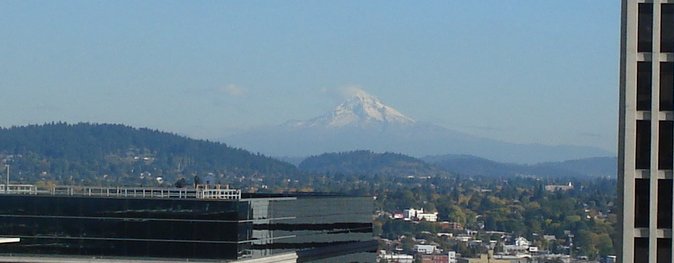
I attended the recent National Tree Farmer Convention in Portland Oregon. There were many fine presentations (and I will write more about them) and we got the chance to see first hand how forestry is done in the Pacific Northwest during a field day at the Little Beaver Creek Tree Farm. It was very interesting to see how forestry is done another part of the country. We work in different ecological, political and economic environments, but forestry is similar wherever you go and we can always learn a lot from talking to each other and sharing experiences.
Forest certification was the subject of several presentations. This is not a new topic. It has been a central part of tree farming since the creation of the American Tree Farm System sixty-seven years ago, but new developments in forest certification will help tree farmers in Virginia. Until recently, the biggest advantages for owners as part of the tree farm system came from the advice and assistance they could receive to better grow their trees while protecting water resources, soils and wildlife. Having the familiar tree farm sign in from of your property indicating that your tree farm was up to standards was a source of justifiable pride, but the other aspects of membership had greater practical value. Times are changing. As consumers all across the globe become more aware of the impact of forestry on the environment, buyers in the U.S. and especially internationally are increasingly looking for and demanding wood that comes forests where the owners practice sustainable forestry.
Below is Mt Hood from our hotel. Portland is a pleasant city with beautiful surroundings.

Tree farmers have been doing that since the American Tree Farm System was founded in 1941; certification is a way to prove and demonstrate that high standard to others. It is likely that in the near future that wood for certified forests will command a price premium. Representatives of firms trading internationally tell us that it is already an advantage to sell certified wood in places like Europe. Beyond that, certification will help tree farmers gain position in emerging markets concerning such things as green buildings, bioenergy and potential carbon trading programs. No carbon trading will be possible unless a forest is certified, for example.
The American Tree Farm System (ATFS) is the oldest and largest forest certification program in the United States, but even a respected and well-known organization like ours can use friends and we recently got some more when it was announced in August that ATFS was endorsed by the Programme for the Endorsement of Forest Certification (PEFC). This is important because PEFC is recognized internationally. This means the ATFS wood meets an accepted international standard and will find greater acceptance in world markets. Only around 10% of the wood sold globally is from certified forests, but this is growing rapidly. PEFC is by far the largest certification network, currently comprising thirty-five independent national forest certification programs with 510 million certified acres in the various programs. Among the countries with PEFC certified forests are such places as Canada, Norway, Sweden, Finland, Spain Brazil and Malaysia.
ATFS is the acknowledged certification system for small American forest owners and will work to ensure that standards are and remain appropriate for this constituency – people like you and me. The partnership with PEFC will not change the way tree farmers interact with ATFS on a day-to-day basis. Individual owners will still have their point of contact with state tree farm committees. State committees in turn will be certified by tree farm regions
No building material is more environmentally friendly than wood, considering competing materials such as plastics, metal or concrete. Wood is biodegradable and completely renewable. Beyond that, good forestry can do more to address the problems of water purity, soil protection, biodiversity and climate change than almost any other activity practiced over large areas of the world. In other words, forests and wood products are part of the solution to many environmental challenges. It is time that forest producers got credit for the good they do. Most people do not know that the majority of timberland in the U.S. is privately owned and managed by owners like us, concerned with the future of our land. Certification is a way to explain what we do to a wider world.
